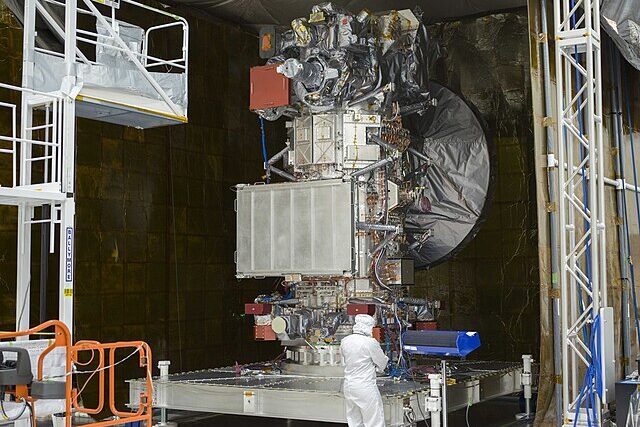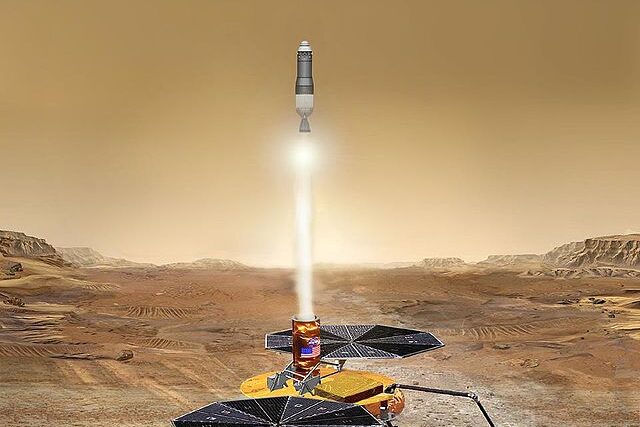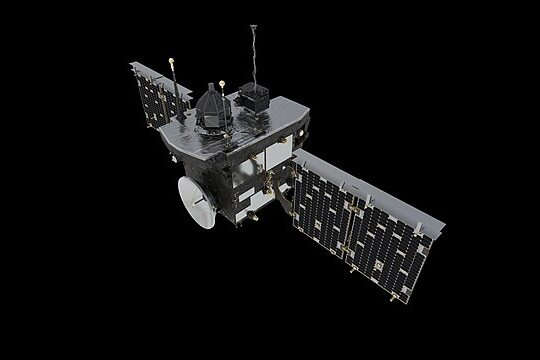1. Artemis III: Humanity’s Return to the Moon

Artemis III is set to make history as the first crewed lunar landing since Apollo 17 in 1972. This mission, led by NASA, aims to land astronauts on the Moon’s South Pole, a region rich in water ice and scientific potential. The mission will include the first woman and the next man to walk on the lunar surface, symbolizing a new era of inclusivity in space exploration. Experts believe this mission will pave the way for sustainable lunar exploration, with plans to establish a permanent human presence on the Moon. The Artemis program is not just about revisiting the Moon but also about testing technologies and systems for future Mars missions.
The excitement around Artemis III lies in its potential to unlock the Moon’s resources and deepen our understanding of its geology. The South Pole’s permanently shadowed craters are believed to hold water ice, which could be used for life support and fuel production. This mission will also test new spacesuits, lunar rovers, and habitat modules designed for long-term stays. The collaboration between NASA, international partners, and private companies highlights the global effort to explore the Moon. Artemis III is more than a mission; it’s a stepping stone to the stars, reigniting humanity’s passion for space exploration.
2. Europa Clipper: Unveiling Jupiter’s Icy Moon

Europa Clipper is one of the most anticipated missions to explore Jupiter’s moon Europa, which is believed to harbor a vast subsurface ocean. Scheduled for launch in 2025, this NASA mission aims to study Europa’s ice shell, geology, and potential habitability. The spacecraft will perform multiple flybys, using a suite of scientific instruments to analyze the moon’s surface and subsurface. Scientists are particularly interested in the plumes of water vapor that have been observed erupting from Europa’s surface, as they could provide direct access to the ocean below.
The mission’s findings could revolutionize our understanding of life beyond Earth. Europa’s ocean is thought to contain more than twice the volume of all Earth’s oceans, making it a prime candidate in the search for extraterrestrial life. The Clipper will carry instruments to measure the moon’s magnetic field, surface composition, and ice thickness, providing critical data for future missions. Experts believe that Europa could hold the key to answering one of humanity’s most profound questions: Are we alone in the universe? Europa Clipper is not just a mission to a distant moon; it’s a journey to the heart of possibility.
3. Mars Sample Return: Bringing the Red Planet Home

The Mars Sample Return mission, a collaboration between NASA and the European Space Agency (ESA), aims to bring Martian soil and rock samples back to Earth. This ambitious mission involves multiple spacecraft, including a rover to collect samples, a lander to retrieve them, and an orbiter to return them to Earth. The samples, collected by NASA’s Perseverance rover, could provide unprecedented insights into Mars’ geology and potential past life. Scientists are eager to analyze these samples in Earth-based laboratories, where they can use advanced techniques to study them in detail.
The mission’s complexity is a testament to the ingenuity and collaboration of the global space community. It represents a significant step toward human exploration of Mars, as the samples will help scientists assess the planet’s habitability and potential resources. Experts believe that the Mars Sample Return mission could answer critical questions about the planet’s history and its potential to support life. This mission is not just about bringing rocks back to Earth; it’s about unlocking the secrets of our neighboring planet and paving the way for future explorers.
4. James Webb Space Telescope: Peering Deeper into the Cosmos

The James Webb Space Telescope (JWST), launched in 2021, continues to revolutionize our understanding of the universe. In 2025 and beyond, JWST will focus on studying distant galaxies, exoplanets, and the early universe. Its advanced instruments allow it to observe the universe in infrared light, revealing details that were previously hidden. Scientists are particularly excited about its ability to study the atmospheres of exoplanets, potentially identifying signs of habitability or even life.
JWST’s discoveries have already reshaped our understanding of the cosmos, and its future observations promise to be even more groundbreaking. The telescope’s ability to peer back in time to the early universe provides a unique window into the formation of galaxies and stars. Experts believe that JWST could uncover new insights into the nature of dark matter and dark energy, two of the greatest mysteries in modern astrophysics. This mission is not just about observing the universe; it’s about rewriting the story of our cosmic origins.
5. Dragonfly: Exploring Titan’s Mysterious Surface

Dragonfly, a NASA mission set to launch in 2027, will explore Saturn’s moon Titan, a world with a thick atmosphere and liquid hydrocarbon lakes. This rotorcraft lander will fly across Titan’s surface, studying its chemistry and potential for prebiotic processes. Titan’s unique environment, with its Earth-like weather and geology, makes it a fascinating target for exploration. Scientists are particularly interested in the moon’s organic molecules, which could provide clues about the origins of life.
Dragonfly’s mission is a bold step into the unknown, as it will be the first time a rotorcraft is used to explore another world. The spacecraft will carry a suite of instruments to analyze Titan’s surface and atmosphere, providing critical data for understanding its complex chemistry. Experts believe that Titan could hold the key to understanding how life might arise in different environments. This mission is not just about exploring a distant moon; it’s about unraveling the mysteries of life itself.
6. Psyche: Journey to a Metal World

The Psyche mission, led by NASA, will explore a unique metal-rich asteroid of the same name, located in the asteroid belt between Mars and Jupiter. Scheduled to arrive in 2026, this mission aims to study the asteroid’s composition, structure, and history. Scientists believe that Psyche could be the exposed core of a protoplanet, providing insights into the early solar system’s formation. The spacecraft will carry instruments to map the asteroid’s surface and measure its magnetic field, shedding light on its origins.
Psyche’s exploration could revolutionize our understanding of planetary cores and the processes that shaped our solar system. The mission’s findings could also have implications for the study of other metal-rich bodies in the universe. Experts believe that Psyche could hold clues about the building blocks of planets and the forces that drive their evolution. This mission is not just about visiting an asteroid; it’s about uncovering the secrets of our cosmic neighborhood.
7. Lunar Gateway: Humanity’s First Space Station Around the Moon

The Lunar Gateway, a collaboration between NASA, ESA, and other international partners, will serve as a space station orbiting the Moon. Scheduled for construction in the mid-2020s, the Gateway will support lunar exploration and serve as a staging point for future missions to Mars. The station will include living quarters, laboratories, and docking ports for spacecraft, enabling long-term human presence in deep space. Scientists are excited about the Gateway’s potential to conduct experiments in microgravity and study the effects of deep space on the human body.
The Gateway represents a significant step toward sustainable space exploration, as it will provide a platform for testing technologies and systems for future missions. Its location in lunar orbit will allow astronauts to explore the Moon’s surface while maintaining a connection to Earth. Experts believe that the Gateway could serve as a model for future space stations, enabling humanity to explore deeper into the solar system. This mission is not just about building a space station; it’s about creating a gateway to the stars.
8. Venus Missions: Unlocking the Secrets of Earth’s Twin

Several missions to Venus are planned for the late 2020s, including NASA’s VERITAS and DAVINCI+ and ESA’s EnVision. These missions aim to study Venus’ atmosphere, surface, and geology, providing insights into its extreme climate and potential past habitability. Scientists are particularly interested in understanding why Venus, often called Earth’s twin, evolved so differently from our planet. The missions will carry instruments to map the planet’s surface, analyze its atmosphere, and study its volcanic activity.
The exploration of Venus could provide critical insights into the processes that shape terrestrial planets and their climates. Experts believe that Venus could hold clues about the early history of Earth and the potential for life on other planets. These missions are not just about visiting a neighboring planet; they’re about understanding the forces that shape our world and others like it.
9. Comet Interceptor: Chasing a Pristine Comet

The Comet Interceptor, a mission led by ESA, aims to study a pristine comet as it enters the inner solar system. Scheduled for launch in 2029, this mission will provide insights into the composition and structure of comets, which are remnants of the early solar system. Scientists are particularly interested in studying the comet’s nucleus and coma, which could reveal clues about the formation of planets and the delivery of water to Earth.
The mission’s ability to intercept a comet on its first visit to the inner solar system makes it a unique opportunity to study these ancient objects in their pristine state. Experts believe that the Comet Interceptor could provide critical insights into the origins of our solar system and the building blocks of life. This mission is not just about chasing a comet; it’s about uncovering the secrets of our cosmic past.
10. Starship: Revolutionizing Space Travel

SpaceX’s Starship, a fully reusable spacecraft, is set to revolutionize space travel in the 2020s and beyond. Designed to carry humans and cargo to the Moon, Mars, and beyond, Starship represents a new era of space exploration. Its massive payload capacity and reusability make it a cost-effective solution for ambitious missions. Scientists are excited about the potential of Starship to enable large-scale exploration and colonization of other worlds.
Starship’s development is a testament to the power of innovation and collaboration in the space industry. Its success could pave the way for sustainable human presence on the Moon and Mars, as well as the exploration of deeper space. Experts believe that Starship could transform our approach to space exploration, making it more accessible and affordable. This mission is not just about building a spacecraft; it’s about opening the door to humanity’s future in the stars.


